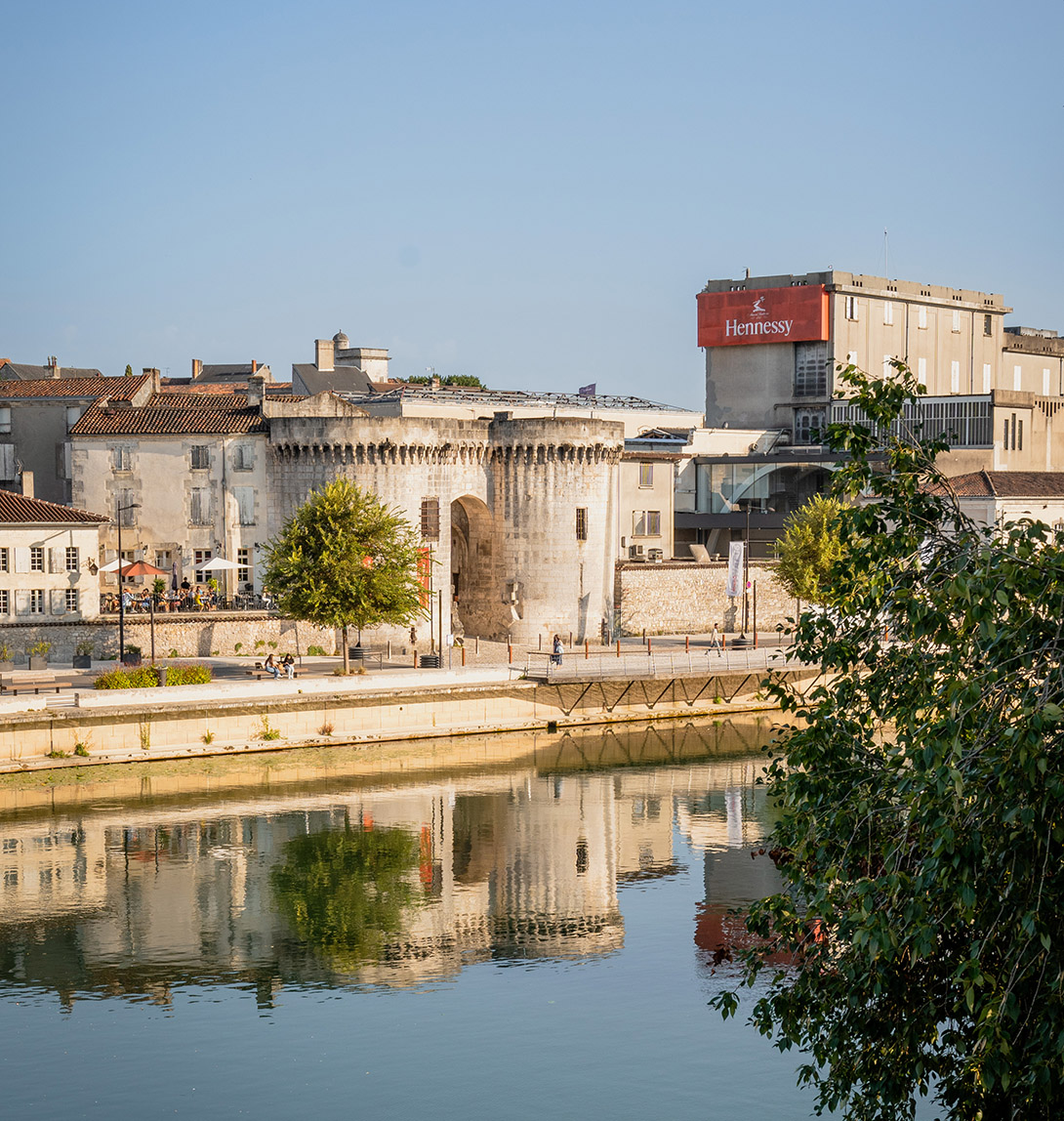
Just north of Bordeaux, in southwestern France, lies a region of extraordinary cultural and historical significance—the Cognac region. This picturesque landscape, carved by the winding Charente River, has given birth to one of the world's most prestigious spirits. Beyond its eponymous brandy, the Cognac region tells a story of centuries-old tradition, remarkable craftsmanship, and a deep connection to the land that nurtures its iconic grape varieties.
While globally celebrated for its amber-hued spirit, the region harbors a lesser-known yet equally fascinating wine culture. The same terroir that produces exceptional eau-de-vie also yields distinctive wines, offering visitors a multifaceted tasting experience. From medieval towns to sprawling vineyards and historic distilleries, the Cognac region presents a rich tapestry of French heritage waiting to be discovered.
The Cognac region occupies a privileged position in southwestern France, primarily within the Charente and Charente-Maritime departments. Located approximately 120 kilometers north of Bordeaux, (about 1-1/2 hours drive), this region benefits from a strategic position between the Atlantic Ocean to the west and the gentle rolling hills of the French countryside to the east.
Spanning approximately 78,000 hectares of vineyards, the Cognac region is centered around the charming town of Cognac itself, with Jarnac, Segonzac, and Châteauneuf-sur-Charente serving as other important centers of production. The landscape is dominated by the meandering Charente River, which historically provided vital transportation for barrels of the precious spirit to reach ships bound for international markets.
The region's proximity to the Atlantic creates a unique maritime climate that moderates temperatures year-round. Mild winters and warm—but not excessively hot—summers provide ideal growing conditions for the Ugni Blanc grape (also known as Trebbiano), which accounts for over 98% of plantings in the region. This geographic sweet spot, combining coastal influence with continental characteristics, contributes significantly to the distinctive character of Cognac spirits.
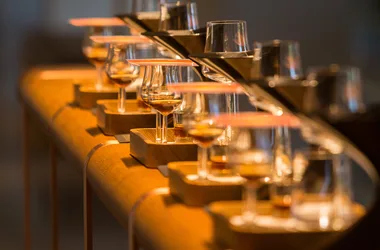
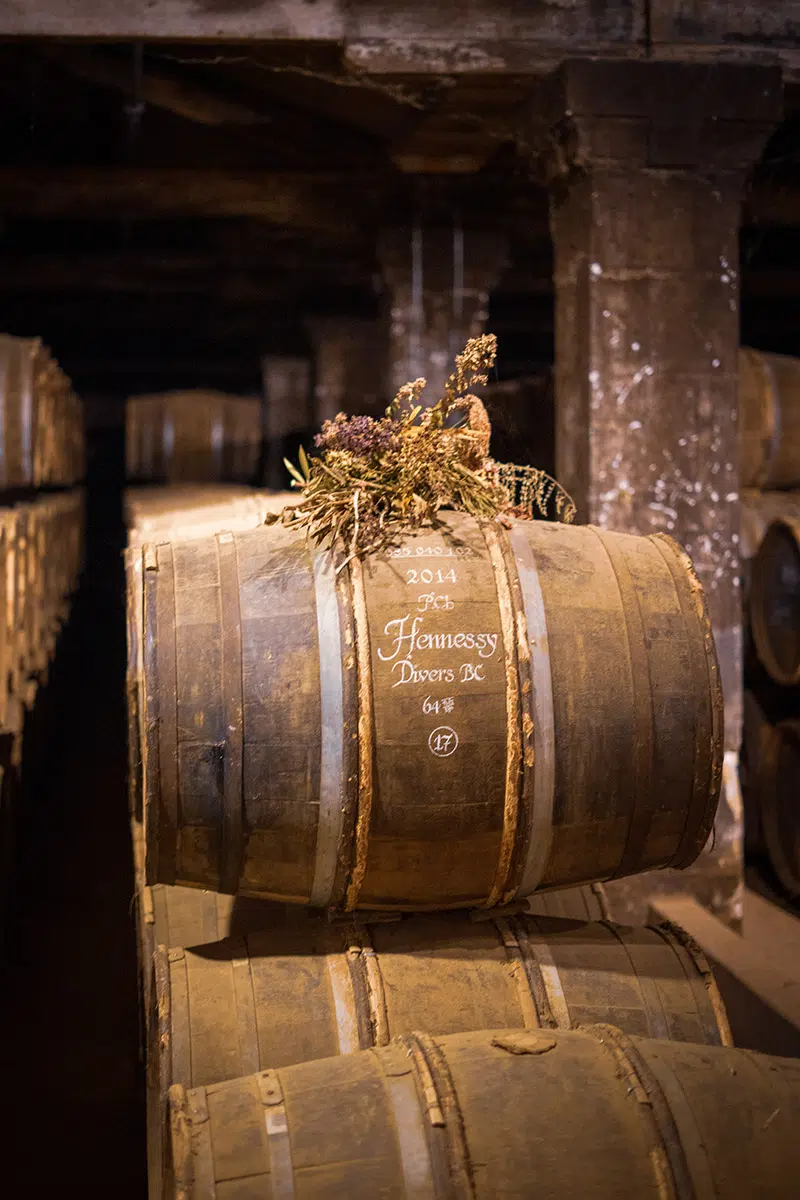
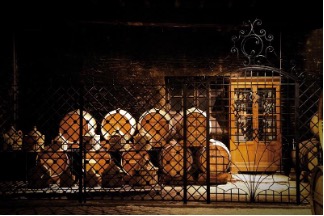
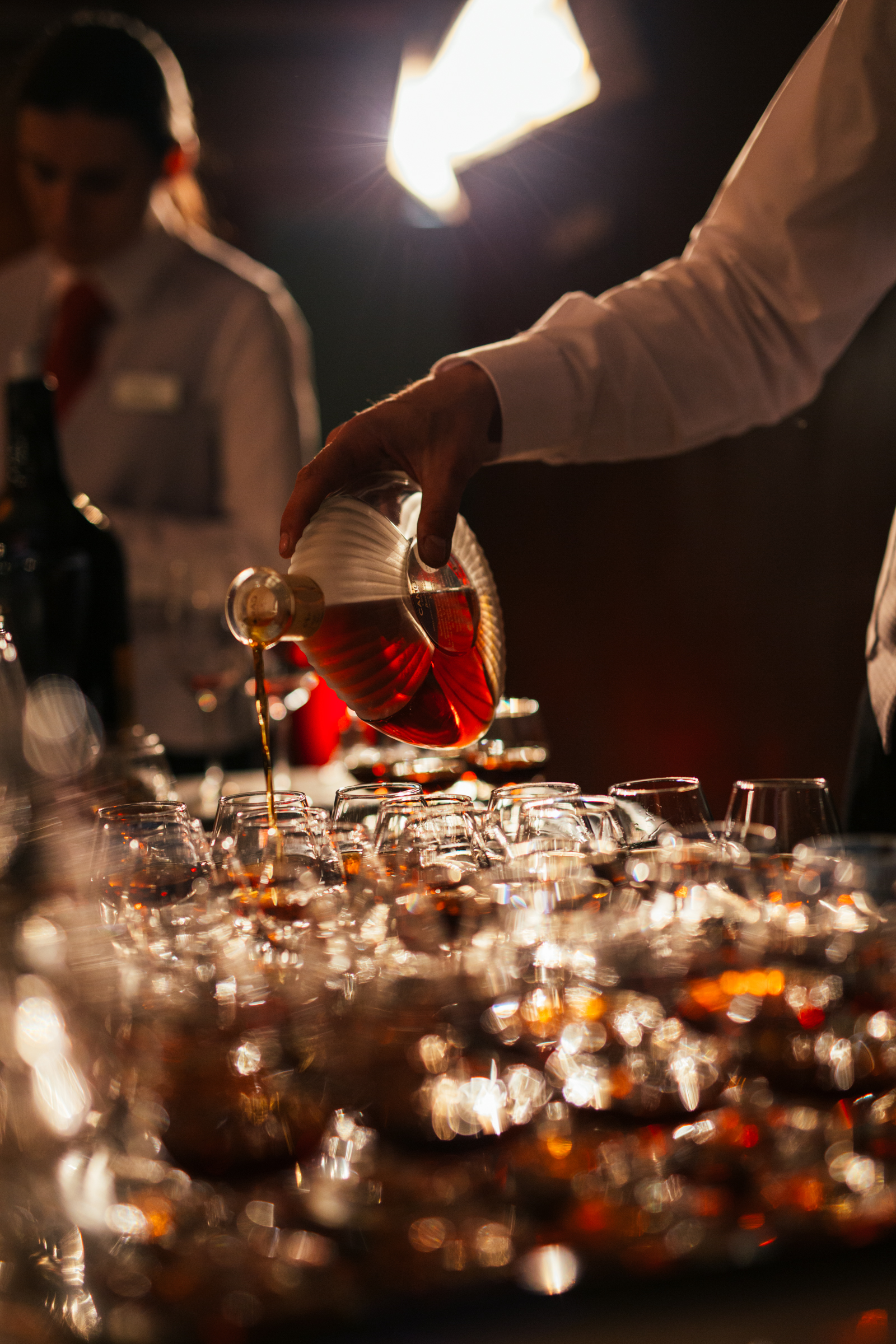
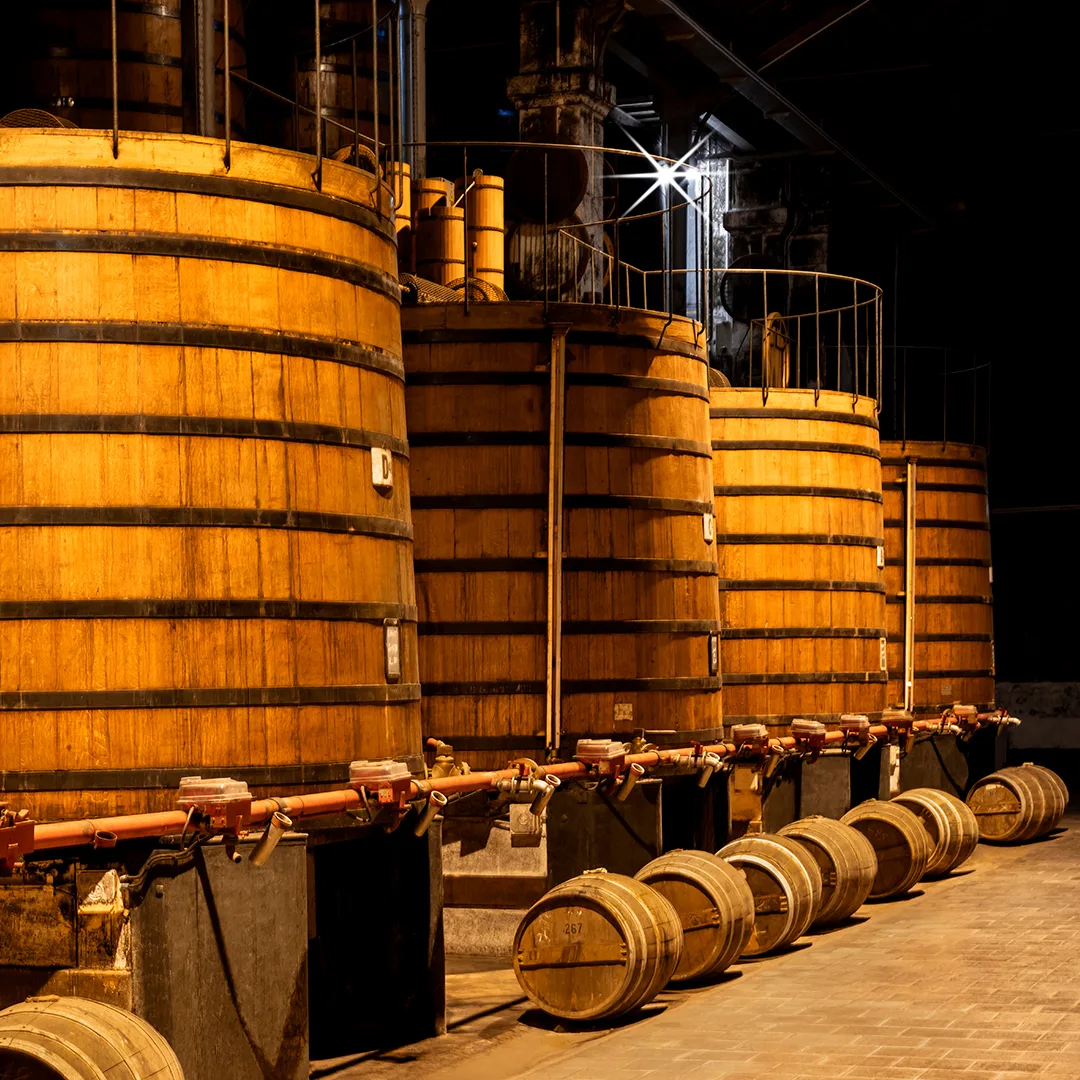
The exceptional quality of Cognac owes much to the region's remarkable terroir—a harmonious combination of soil, climate, and topography that creates ideal conditions for producing the base wines destined for distillation.
Central to Cognac's terroir is its distinctive soil composition. The region is characterized by chalky, limestone-rich soils, particularly in the premier growing areas of Grande Champagne and Petite Champagne. These soils, formed from marine sediments dating back to the Jurassic period, provide excellent drainage while maintaining sufficient moisture reserves during dry periods—perfect conditions for vines to develop deep root systems that access the underlying mineral content.
The maritime climate of Cognac represents another crucial element of its terroir. The Atlantic Ocean's proximity moderates temperature extremes, providing mild winters and warm summers with adequate rainfall. This climate allows for a long, even ripening period that produces grapes with the perfect balance of acidity and sugar content—high acidity being particularly desirable for distillation purposes.
Mist formations along the Charente River valley create microclimates that influence flavor development in the grapes, while the region's gentle slopes offer varying degrees of sun exposure, further contributing to the complexity found in Cognac spirits. This combination of factors—chalky soils, maritime influence, and topographical variations—creates a terroir perfectly suited to producing wines with the precise characteristics needed for exceptional Cognac production.
The predominant grape variety, Ugni Blanc, thrives in these conditions, yielding wines that may seem unremarkable for direct consumption but possess the ideal qualities for distillation: high acidity, relatively low alcohol content, and subtle flavors that transform beautifully during the distillation and aging processes.
The Cognac region's storied past begins in antiquity, with viticulture introduced by the Romans around the 3rd century AD. However, the region initially gained prominence not for spirits but for salt production and wine cultivation. These early vineyards produced wines that were exported to Northern Europe, particularly the Netherlands and England, as early as the 12th century.
A pivotal moment in Cognac's history occurred in the 16th century when Dutch traders began distilling the region's wines to preserve them during long sea voyages and reduce shipping costs. This process, known as "brandewijn" (burnt wine), gave birth to what would eventually become Cognac. By the early 17th century, a second distillation was introduced, creating the double-distillation method that defines Cognac production to this day.
The 17th and 18th centuries witnessed the establishment of the first official Cognac houses, with Martell founded in 1715, followed by Rémy Martin (1724), Hennessy (1765), and others. These pioneering enterprises laid the foundation for an industry that would gain global recognition for its exceptional quality and craftsmanship.
The 19th century brought both challenges and innovations. The phylloxera crisis of the 1870s devastated European vineyards, including those in Cognac. The region's recovery involved replanting with American rootstock resistant to the pest, with Ugni Blanc emerging as the predominant grape variety due to its resilience and suitability for distillation.
The 20th century saw the formalization of Cognac production regulations, with the Appellation d'Origine Contrôlée (AOC) status granted in 1936, establishing clear geographic boundaries and production standards. This legal framework helped preserve traditional methods while ensuring consistent quality across the region.
Today, the Cognac region stands as a testament to centuries of tradition, innovation, and perseverance, with its history reflected in every aspect of production, from vineyard practices to the aging of spirits in centuries-old cellars.
Cognac's journey from local agricultural product to global luxury icon represents one of France's most remarkable export success stories. This transformation began in earnest during the 17th century, when Dutch merchants recognized the potential of distilling the region's acidic white wines to create a more stable product for shipping across northern Europe.
The British market played a crucial role in Cognac's international rise, with merchants establishing trading houses in the region to source and export the finest spirits. Names like Martell, Hennessy (founded by an Irishman), and later Courvoisier capitalized on growing British demand, establishing commercial networks that would eventually span the globe.
The 18th and 19th centuries saw Cognac gain prestige among European aristocracy and royal courts. Napoleon Bonaparte famously favored Courvoisier, a connection the house proudly maintains in its marketing as "The Cognac of Napoleon." This royal and aristocratic patronage elevated Cognac's status from mere commodity to luxury product.
Colonial expansion in the 19th century opened new markets for Cognac houses, particularly in Asia. Hennessy recognized the potential of the Chinese market as early as 1859, laying the groundwork for what would become one of Cognac's most important export destinations. Similarly, expansion into American markets following the Civil War established another crucial consumer base.
The development of distinctive bottles, labels, and aging classifications (VS, VSOP, XO) in the 19th century further distinguished Cognac as a premium product with varying levels of quality and price points, making it accessible to different segments of the international market.
The post-World War II period saw Cognac cement its status in popular culture, with prominent placement in film, music, and literature. The spirit became associated with sophistication and success, particularly in American and later Asian markets. Hip-hop culture embraced Cognac in the late 20th century, with artists frequently referencing brands like Hennessy and Rémy Martin, introducing the spirit to new generations of consumers.
Today, Cognac represents one of France's most valuable exports, with over 200 million bottles shipped annually to more than 160 countries. The industry generates billions in revenue and serves as a powerful ambassador for French craftsmanship, luxury, and cultural heritage.
The Cognac region is home to numerous producers, from small family operations to global powerhouses. However, four houses have emerged as the dominant forces in the industry, collectively accounting for over 85% of global Cognac sales. These prestigious maisons have shaped the industry's development and continue to define its future.

Hennessy: Founded in 1765 by Irish military officer Richard Hennessy, this house has grown to become the largest Cognac producer, representing nearly half of global Cognac sales. Owned by luxury conglomerate LVMH,
Hennessy maintains extensive vineyards and distillation facilities throughout the region. The house is renowned for its innovative marketing and wide range of expressions, from the accessible Hennessy VS to the prestigious Paradis Imperial. Hennessy's extraordinary reach in international markets, particularly in the United States and China, has made it synonymous with Cognac for many consumers worldwide.
Rémy Martin: Established in 1724, Rémy Martin distinguishes itself by producing Cognacs exclusively from the premier Grande Champagne and Petite Champagne crus, creating what's known as Fine Champagne Cognac.
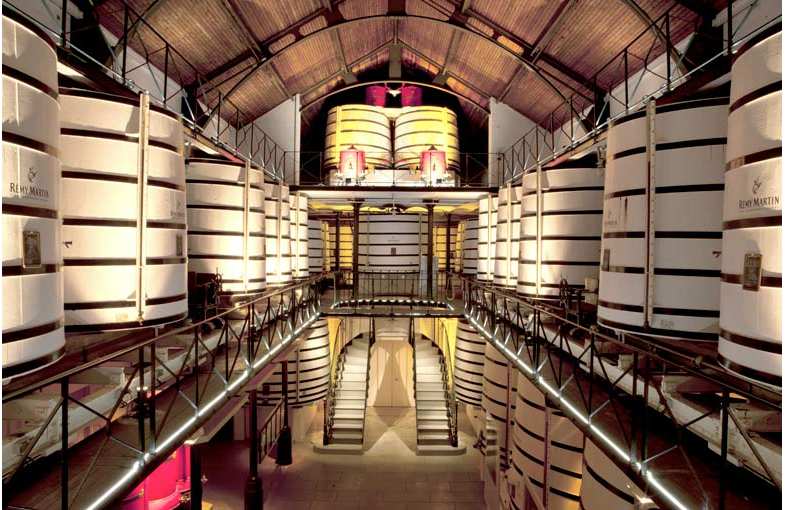
The house's flagship Louis XIII expression, aged in century-old tierçons (unique oak barrels) and incorporating eaux-de-vie up to 100 years old, represents one of the world's most prestigious spirits. Rémy Martin's commitment to terroir and traditional production methods has earned it a reputation for exceptional quality and complexity.
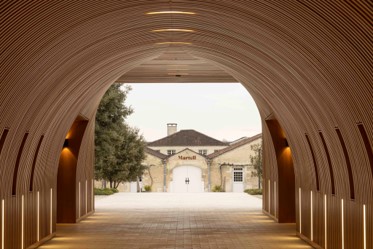
Martell: The oldest of the major Cognac houses, founded in 1715 by Jean Martell, is characterized by its distinctive style emphasizing elegance and finesse. Martell's signature approach includes distilling its eaux-de-vie without lees and
aging predominantly in fine-grain oak from the Tronçais forest. This results in Cognacs celebrated for their subtle fruit notes and refined character. The house's Cordon Bleu expression, created in 1912, remains an iconic representation of the Martell style.
Courvoisier: Often referred to as "The Cognac of Napoleon," Courvoisier was established in 1835 in Jarnac and gained fame as the preferred spirit of the French Imperial Court.
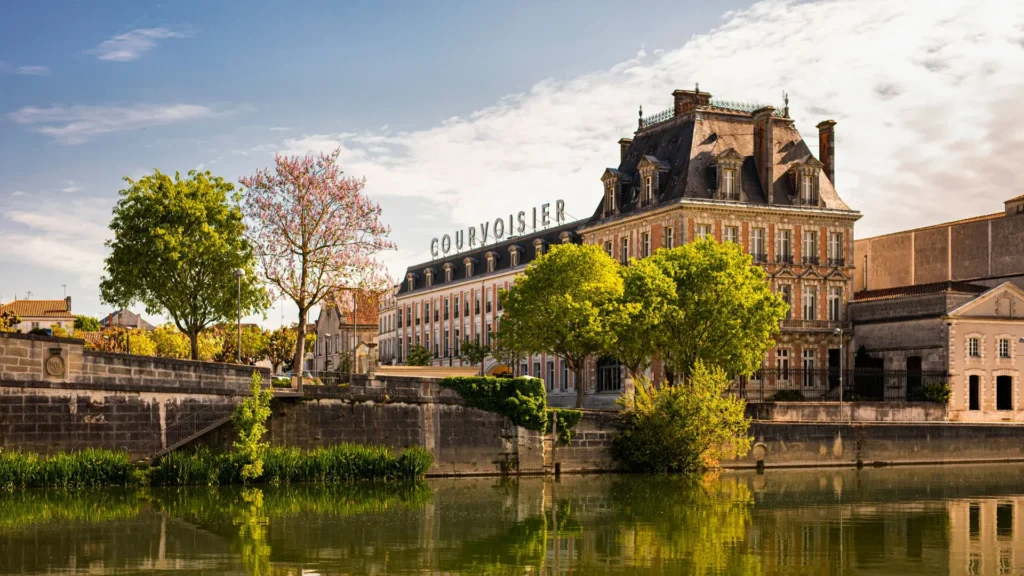
Now owned by Beam Suntory, Courvoisier produces a range of expressions, from the fruit-forward VS to the richly complex XO. The house's distinctive packaging and historical associations have helped establish its premium positioning in international markets.
Beyond these four major houses, the region is also home to respected producers like Camus (the largest family-owned Cognac house), Hine (renowned for its vintage Cognacs), Delamain (specializing exclusively in older Cognacs), and numerous smaller artisanal producers who maintain traditional methods and often focus on specific terroirs within the region.
While the major Cognac houses share a commitment to quality and tradition, each has developed distinctive approaches to production, aging, and blending that create recognizable house styles.
Hennessy is characterized by its balanced approach, producing Cognacs that offer accessibility while maintaining complexity. The house employs a vast team of tasters and blenders led by the Master Blender, who works with a tasting committee to maintain consistency across its extensive portfolio. Hennessy's style often features vibrant fruit notes balanced with subtle oak influence, spice, and floral elements. The house is also known for its innovative aging techniques and experimental limited editions that push the boundaries of traditional Cognac production while respecting its core principles.
Rémy Martin stands apart through its exclusive use of grapes from the Grande Champagne and Petite Champagne crus, creating Fine Champagne Cognacs known for their exceptional aging potential. The house style emphasizes floral notes, particularly the characteristic "rancio" (a desirable nutty, slightly rancid quality that develops with extended aging). Rémy Martin employs a female Cellar Master, a relative rarity in the industry, continuing a tradition of sensory expertise passed down through generations. The house's production methods emphasize longer aging periods and a patient approach to development.
Martell distinguishes itself through a unique distillation process where the lees (residual yeast) are removed before distillation, resulting in a purer, fruit-forward style. The house prefers fine-grained oak from the Tronçais forest for aging, which imparts subtle tannins and allows the fruit character to remain prominent. Martell's Cognacs typically display elegant dried fruit notes, subtle spice, and exceptional smoothness. The house also places particular emphasis on the Borderies cru, the smallest of Cognac's growing regions, known for producing eaux-de-vie with distinctive nutty aromas and round mouthfeel.
Courvoisier is recognized for its floral, delicate approach, with Cognacs that often display pronounced jasmine, orange blossom, and dried fruit notes. The house employs specific distillation techniques that retain these aromatic compounds, including careful temperature control during the process. Courvoisier ages its spirits in handcrafted oak barrels from the Limousin and Tronçais forests, with the wood first seasoned for at least three years before barrel construction. This meticulous approach to wood management contributes to the house's refined style and subtle oak integration.
These distinctive approaches to every stage of production—from grape selection to distillation, aging, and blending—ensure that each house maintains a recognizable signature while operating within the strict regulations that govern Cognac production. For connoisseurs, these differences offer a fascinating study in how nuanced variations in technique can produce dramatically different expressions of the same spirit.

The Cognac region is divided into six distinct growing areas or "crus," each with unique soil compositions and microclimates that influence the character of eaux-de-vie produced there. These appellations form a series of concentric rings around the town of Cognac, with quality traditionally considered to decrease as one moves outward from the center.
Grande Champagne, the premier cru, occupies the heart of the region south of the town of Cognac. Its highly calcareous soil, composed primarily of soft, crumbly chalk from the Campanian period, produces eaux-de-vie prized for their finesse, floral aromas, and exceptional aging potential. Spirits from this appellation develop slowly, often requiring decades to reach their full potential, but reward patience with extraordinary complexity and length.
Petite Champagne surrounds Grande Champagne and shares similar chalky soils, though with a higher clay content. Eaux-de-vie from this cru display characteristics similar to those from Grande Champagne—floral notes, finesse, and good aging potential—though typically developing slightly faster. When Cognac contains spirits exclusively from Grande and Petite Champagne, with at least 50% from Grande Champagne, it may carry the prestigious "Fine Champagne" designation.
Borderies, the smallest of the six crus, lies north of the town of Cognac. Its unique soil composition, featuring flinty clay, produces eaux-de-vie with distinctive nutty aromas, particularly notes of violet and iris. Cognacs containing a high proportion of Borderies typically display a round, smooth character and reach optimal maturity faster than those from the Champagne districts.
Fins Bois encircles the three central crus and features heavier, clayey soils. Eaux-de-vie from this region develop more rapidly, producing round, supple Cognacs with fruity, grape-like aromas and notes of fresh pressed grapes. Though historically considered less prestigious than the central appellations, skillful distillers produce excellent Cognacs from Fins Bois, particularly valued for adding fruity complexity to blends.
Bons Bois and Bois Ordinaires form the outermost rings of the Cognac region. These areas have sandy soils with less limestone and experience stronger maritime influences. Eaux-de-vie from these regions mature quickly and traditionally provide lighter components for blended Cognacs, though some producers are now creating interesting single-cru expressions that highlight their unique maritime character.
While most commercial Cognacs blend spirits from multiple crus to achieve balance and complexity, the distinctive character of each appellation provides master blenders with a diverse palette of flavors to create expressions ranging from youthful and vibrant to deeply complex and contemplative.
Cognac production is governed by strict regulations that include specific aging classifications, allowing consumers to understand the minimum age and general character of the spirit they're purchasing. These classifications are based on the age of the youngest eau-de-vie in the blend and serve as important quality indicators.
VS (Very Special): Also known as ✶✶✶ (three stars), this entry-level classification requires a minimum of two years of aging in oak barrels. VS Cognacs typically display youthful vibrancy with pronounced fruit notes, subtle vanilla from oak contact, and a fresh character. These spirits represent approximately 50% of global Cognac sales and are commonly used in cocktails or with mixers.
VSOP (Very Superior Old Pale): This mid-tier classification requires a minimum of four years of aging, though most commercial VSOPs contain significantly older spirits in their blends. VSOP Cognacs show greater complexity than VS, with developed notes of dried fruits, spice, and more pronounced oak influence. The category offers an excellent introduction to sipping Cognacs while remaining versatile enough for premium cocktail applications.
XO (Extra Old): Since 2018, XO classification requires a minimum aging period of 10 years (increased from the previous 6-year requirement). These sophisticated Cognacs display remarkable complexity, with tertiary aromas of dried fruits, nuts, chocolate, leather, and the prized "rancio" character that emerges only with extended aging. XO represents the standard for connoisseur appreciation and is typically enjoyed neat.
XXO (Extra Extra Old): A relatively new official classification created in 2018, XXO denotes Cognacs with a minimum aging of 14 years. This category recognizes the trend toward ultra-aged premium Cognacs and provides an additional tier for collectors and enthusiasts.
Beyond these standard classifications, producers often create specialty Cognacs that highlight particular aspects of their craft:
Hors d'Âge: Literally "beyond age," this unofficial designation typically indicates Cognacs even older than XO, often 30+ years of aging.
Vintage Cognacs: Unlike most Cognacs, which are blends of various years, vintage expressions contain spirits from a single harvest year. These rare bottlings, particularly from exceptional years, offer insight into the specific growing conditions of that year.
Single Cru Cognacs: These expressions highlight eaux-de-vie from a specific growth area, such as pure Grande Champagne or Borderies Cognacs, allowing enthusiasts to experience the distinctive character of each terroir.
Single Barrel/Micro-cuvées: Limited releases from individual barrels or small batch blends that showcase particular aspects of a producer's style or experimental approaches.
Each classification and specialty type offers a different expression of Cognac's remarkable diversity, from youthful and vibrant VS to contemplative, decades-old hors d'âge bottlings that represent the pinnacle of the distiller's art.
While the Cognac region is globally celebrated for its eponymous spirit, it maintains a lesser-known but significant wine production heritage. The region produces approximately 98% of its wines specifically for distillation into Cognac, but a small yet interesting wine culture persists alongside the dominant spirit production.
The primary grape variety, Ugni Blanc (known as Trebbiano in Italy), covers roughly 98% of the region's vineyards. When vinified into wine, it produces a highly acidic, relatively low-alcohol product that would be considered rather austere for direct consumption but provides the perfect base for distillation. The high acidity preserves the wine naturally before distillation and contributes to the fresh, fruity character of young eaux-de-vie.
Secondary varieties permitted in the region include Folle Blanche (historically significant but susceptible to disease) and Colombard, along with limited plantings of Montils, Sémillon, Folignan, and Jurancon Blanc. These varieties occasionally appear in local wines, adding aromatic complexity to the region's limited wine production.
The Charente and Charente-Maritime departments do produce wines under various designations:
Vin de Pays Charentais: This regional classification allows producers greater flexibility in grape varieties and styles. White, red, and rosé wines are produced under this designation, with whites typically showcasing fresh citrus and green apple notes, while reds often feature light to medium-bodied styles with red fruit character.
Pineau des Charentes: This unique fortified wine represents the region's most distinctive wine product. Created by adding Cognac eau-de-vie to unfermented grape juice, Pineau comes in white, red, and rosé versions. Aged for at least 18 months, with at least 12 months in oak barrels, Pineau offers a delightful aperitif with notes of dried fruits, honey, and subtle spice, balanced by refreshing acidity.
Small producers throughout the region often maintain limited wine production for local consumption and direct sales to visitors. These wines rarely leave the region but offer insight into the area's wine-growing potential when viewed beyond the demands of Cognac production.
Historical records indicate more diverse wine production before the rise of Cognac as the region's primary product. The phylloxera crisis of the late 19th century, which decimated European vineyards, led to a replanting strategy heavily focused on distillation-suitable varieties, further cementing Cognac's dominance.
For visitors interested in both spirits and wines, the Cognac region offers a fascinating study in how the same terroir can produce such different expressions depending on production methods. The relationship between wine and Cognac production demonstrates the agricultural versatility of this remarkable region.
Decanter Tours provides discerning travelers with unparalleled access to the treasures of the Cognac region through meticulously crafted, private experiences that go far beyond standard distillery visits. Our bespoke itineraries offer intimate encounters with the region's rich heritage, expert-led tastings, and privileged access to locations typically closed to the public.
Led by certified sommeliers and spirits specialists with extensive knowledge of the Cognac region, our tours balance historical and technical insight with sensory pleasure. Whether you're a serious collector or simply curious about this legendary spirit, our experts tailor each experience to your specific interests and knowledge level.
Our signature "Cognac Connoisseur Journey" grants exclusive access to both prestigious houses and artisanal producers. Experience private tastings in centuries-old cellars, guided by master blenders who share rare vintage expressions not available to the general public. These intimate sessions often include the opportunity to sample directly from the barrel, experiencing Cognac at various stages of its development.
For those interested in the production process, our "From Vine to Glass" experience follows Cognac's complete journey. Visit vineyards with viticulturists who explain the region's unique terroir, observe traditional distillation during the crucial winter season, and participate in guided blending sessions where you can create your own custom Cognac under expert supervision.
Accommodation is arranged in carefully selected luxury properties, from historic châteaux to boutique hotels, completing the immersive experience. Private transportation throughout the tour ensures comfort and flexibility, allowing for spontaneous detours to particularly scenic viewpoints or unexpected discoveries.
For the ultimate luxury experience, our "Legacy Collection" tours provide unprecedented access to the most prestigious houses, including private dining experiences paired with rare vintage Cognacs, meetings with family owners whose histories parallel that of Cognac itself, and the opportunity to secure limited-edition bottlings not available on the general market.
Decanter Tours creates memories that extend well beyond standard tasting experiences, offering profound connection to one of France's most storied regions and its legendary spirit. Contact our concierge team today to begin planning your bespoke journey through the heart of Cognac.
Contact us today to curate your best Cognac wine tour.
The Cognac region is located in southwestern France, primarily in the departments of Charente and Charente-Maritime. Centered around the town of Cognac itself, the region lies approximately 120 kilometers (75 miles) north of Bordeaux. The area spans roughly 78,000 hectares of vineyards divided into six distinct growing zones or "crus." The region is characterized by the Charente River running through its heart, which historically served as a vital transportation route for exporting Cognac to international markets. This geographic positioning, between the Atlantic Ocean and the continental interior, creates the unique maritime climate that contributes significantly to the character of the region's wines and spirits.
The Cognac region's exceptional terroir results from a perfect confluence of soil, climate, and topography. The hallmark of the region is its limestone-rich, chalky soils, particularly prominent in the Grande and Petite Champagne crus. These soils provide excellent drainage while retaining sufficient moisture for consistent grape development. The maritime climate, influenced by the nearby Atlantic Ocean, creates moderate temperatures year-round with adequate rainfall and humidity. This climate slows grape ripening, allowing for the development of high acidity and relatively low sugar content—ideal characteristics for distillation. The undulating landscape provides varying sun exposures and microclimates, particularly along the Charente River, where morning mists influence grape development. Additionally, the region's traditional grape varieties, especially Ugni Blanc, have evolved over centuries to thrive specifically in these conditions, producing wines perfectly suited for transformation into the complex spirit that has made the region famous worldwide.
The Cognac region is dominated by four major houses that collectively account for over 85% of global Cognac sales. Hennessy, founded in 1765 by Irishman Richard Hennessy, is the largest producer and represents nearly half of worldwide Cognac shipments. Rémy Martin, established in 1724, is renowned for exclusively producing Fine Champagne Cognacs from the Grande and Petite Champagne crus. Martell, the oldest major house dating to 1715, is known for its elegant style achieved through distillation without lees and aging in fine-grain Tronçais oak. Courvoisier, founded in 1835 and famously favored by Napoleon Bonaparte, rounds out the "Big Four" with its floral, delicate approach to Cognac production. Beyond these global leaders, the region is home to numerous prestigious smaller houses like Camus, Hine, and Delamain, as well as hundreds of independent producers who maintain traditional methods and often focus on specific terroirs within the region. Each house maintains distinctive production methods, aging techniques, and blending approaches that create recognizable house styles, offering Cognac enthusiasts a remarkable diversity of expressions from the same geographic area.

Experience the finest private wine tours in Bordeaux and beyond. With over 20 years of expertise, we craft tailor-made wine journeys to iconic regions like Médoc, Saint-Émilion, Burgundy, and Champagne. Explore exclusive chateaux with expert guides and seamless planning for a truly unforgettable experience.